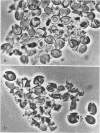Abstract
Microbial cells were disintegrated in a new type of rotary disintegrator with a disc stirrer by a combination of shear force layers, collisions, and rolling of glass beads which were brought into motion by the stirrer. The rate of disintegration at a given dry bed volume of Ballotini beads and a given volume of cell suspension is proportional to the peripheral velocity of the stirrer up to 18 m/sec. Horizontal arrangement of the stirrer increases the effectiveness about five times; 100% disintegration of yeast cells was achieved under optimal conditions within 72 sec at a concentration of 3.5g (dry weight)/100 ml of suspension, and within 96 sec at a concentration of 10.5g (dry weight)/100ml. At 17.5 g (dry weight)/100 ml, the stirrer began to slip. The cell walls of yeast were obtained at the desired degree of crushing and the course of purification was determined by infrared spectral analysis.
Full text
PDF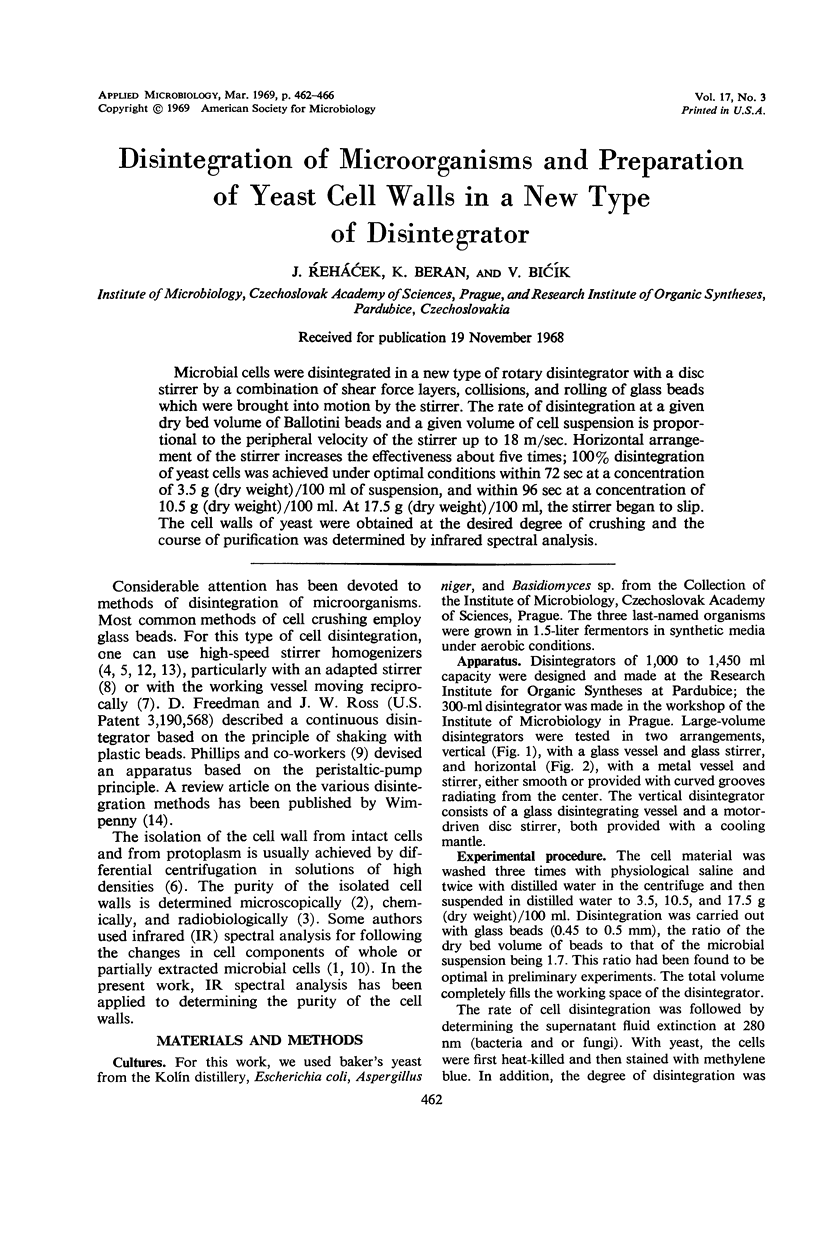
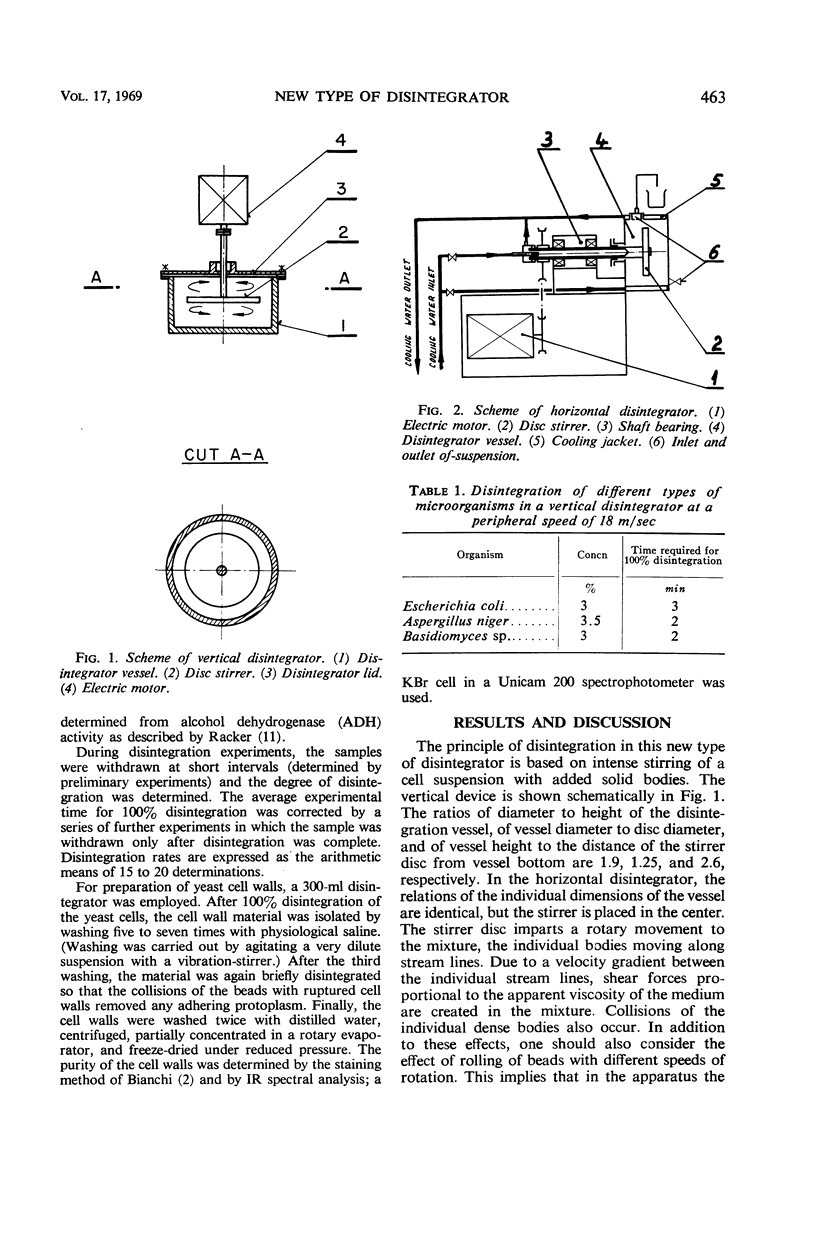
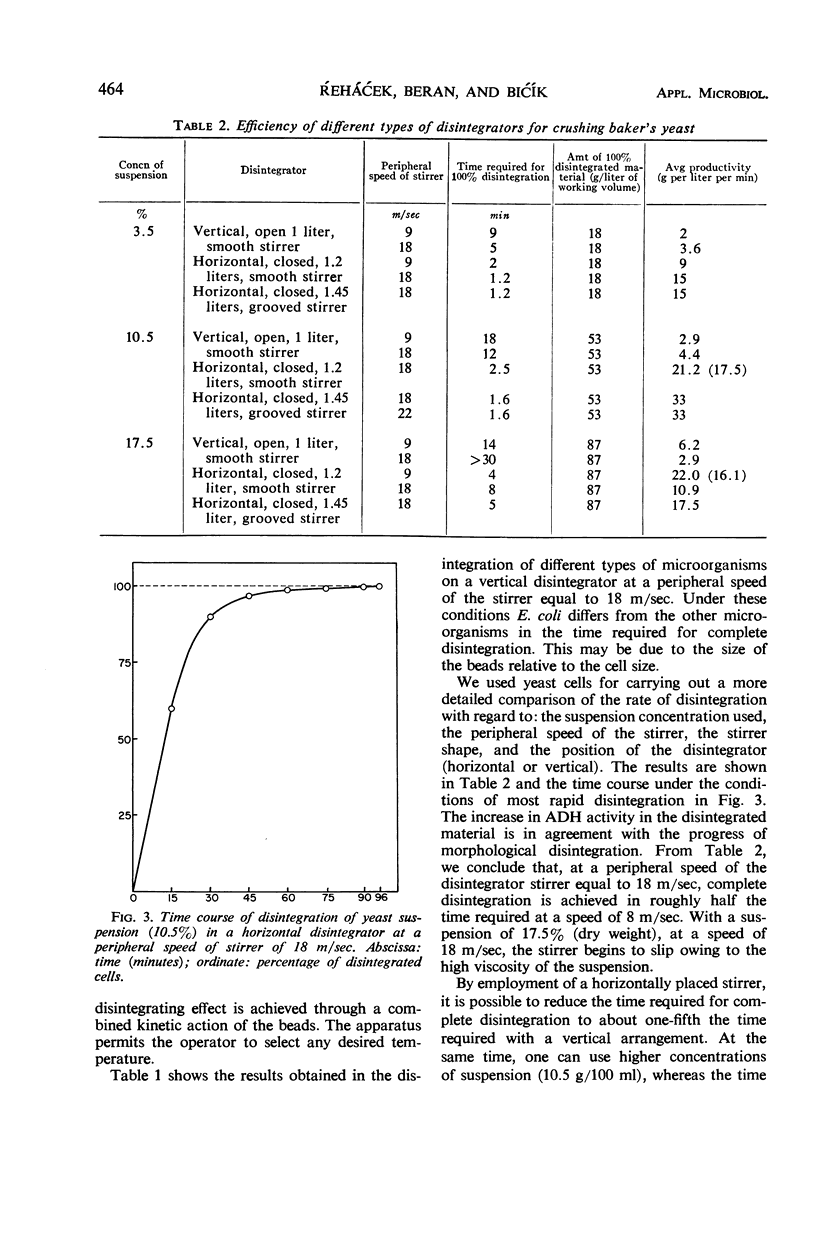
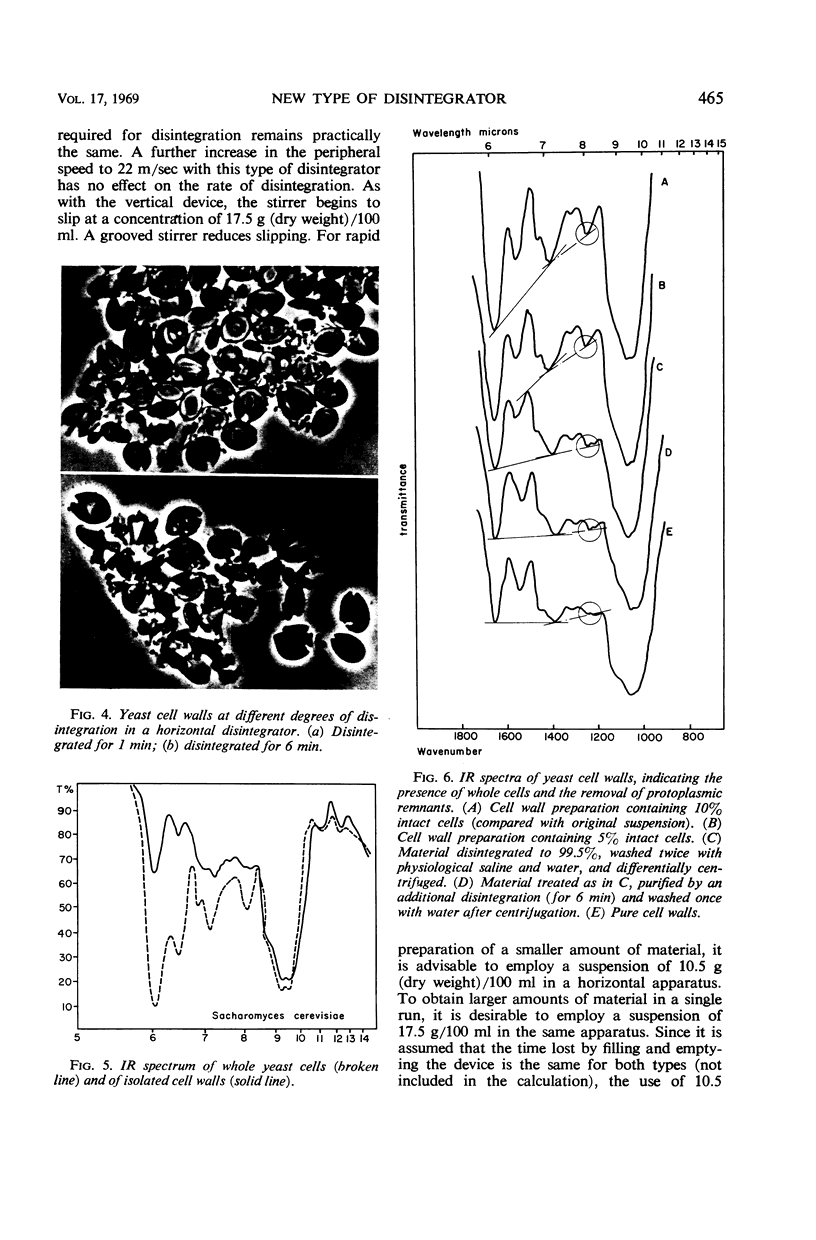
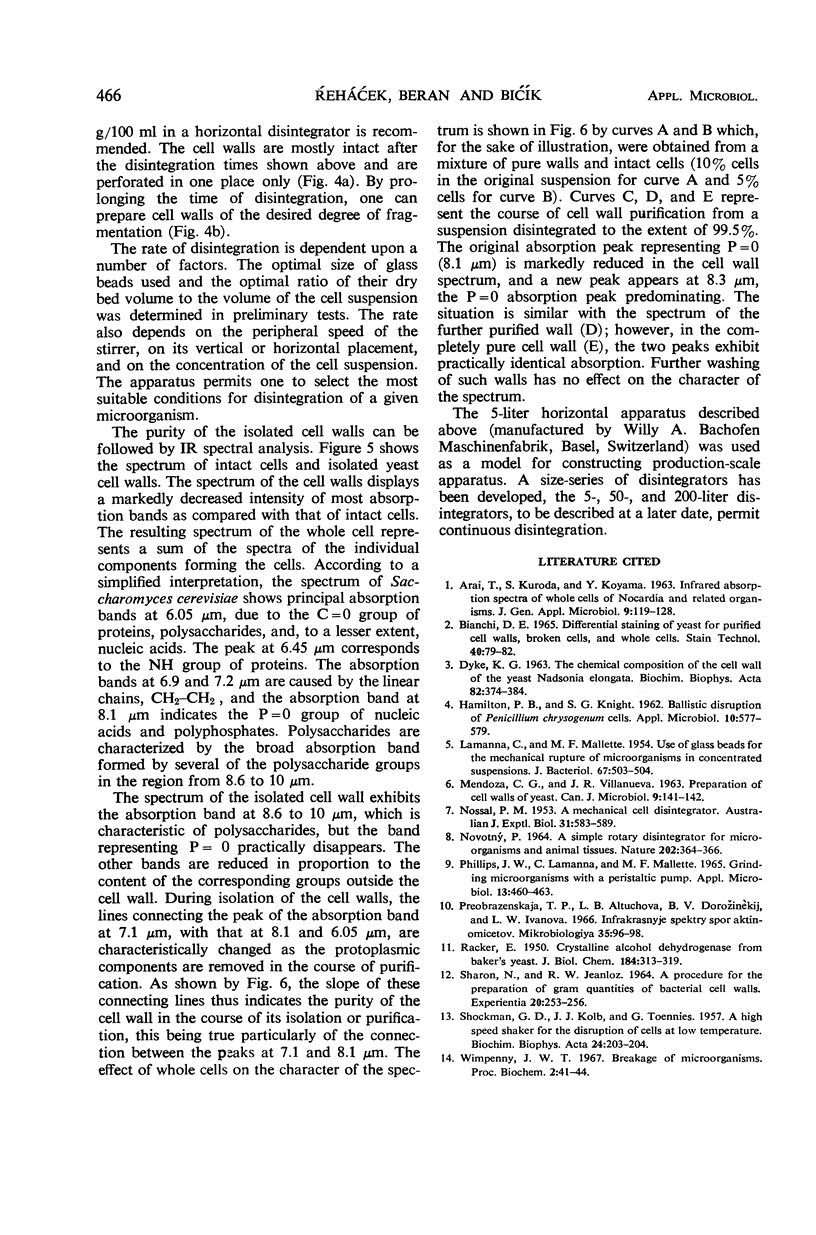
Images in this article
Selected References
These references are in PubMed. This may not be the complete list of references from this article.
- BIANCHI D. E. DIFFERENTIAL STAINING OF YEAST FOR PURIFIED CELL WALLS, BROKEN CELLS, AND WHOLE CELLS. Stain Technol. 1965 Mar;40:79–82. doi: 10.3109/10520296509116383. [DOI] [PubMed] [Google Scholar]
- DYKE K. G. THE CHEMICAL COMPOSITION OF THE CELL WALL OF THE YEAST, NADSONIA ELONGATA. Biochim Biophys Acta. 1964 Feb 10;82:374–384. doi: 10.1016/0304-4165(64)90309-5. [DOI] [PubMed] [Google Scholar]
- HAMILTON P. B., KNIGHT S. G. Ballistic disruption of Penicillium chrysogenum cells. Appl Microbiol. 1962 Nov;10:577–579. doi: 10.1128/am.10.6.577-579.1962. [DOI] [PMC free article] [PubMed] [Google Scholar]
- LAMANNA C., MALLETTE M. F. Use of glass beads for the mechanical rupture of microorganisms in concentrated suspensions. J Bacteriol. 1954 Apr;67(4):503–504. doi: 10.1128/jb.67.4.503-504.1954. [DOI] [PMC free article] [PubMed] [Google Scholar]
- NOSSAL P. M. A mechanical cell disintegrator. Aust J Exp Biol Med Sci. 1953 Dec;31(6):583–589. doi: 10.1038/icb.1953.64. [DOI] [PubMed] [Google Scholar]
- NOVOTNY P. A SIMPLE ROTARY DISINTEGRATOR FOR MICRO-ORGANISMS AND ANIMAL TISSUES. Nature. 1964 Apr 25;202:364–366. doi: 10.1038/202364a0. [DOI] [PubMed] [Google Scholar]
- PHILLIPS J. W., LAMANNA C., MALLETTE M. F. GRINDING MICROORGANISMS WITH A PERISTALTIC PUMP. Appl Microbiol. 1965 May;13:460–463. doi: 10.1128/am.13.3.460-463.1965. [DOI] [PMC free article] [PubMed] [Google Scholar]
- Preobrazhenskaia T. P., Altukhova L. B., Dorozhinskii V. B., Ivanova L. V. Infrakrasnye spektry spor aktinomitsetov. Mikrobiologiia. 1966 Jan-Feb;35(1):96–99. [PubMed] [Google Scholar]
- RACKER E. Crystalline alcohol dehydrogenase from baker's yeast. J Biol Chem. 1950 May;184(1):313–319. [PubMed] [Google Scholar]
- SHOCKMAN G. D., KOLB J. J., TOENNIES G. A high speed shaker for the disruption of cells at low temperatures. Biochim Biophys Acta. 1957 Apr;24(1):203–204. doi: 10.1016/0006-3002(57)90168-3. [DOI] [PubMed] [Google Scholar]
- Sharon N., Jeanloz R. W. A procedure for the preparation of gram-quantities of bacterial cell walls. Experientia. 1964 May 15;20(5):253–254. doi: 10.1007/BF02151786. [DOI] [PubMed] [Google Scholar]



